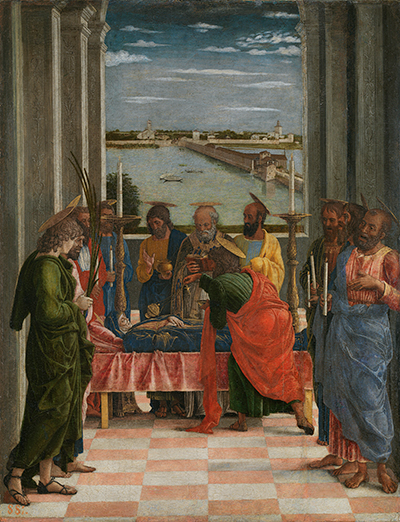Death of the Virgin is probably the smallest painting at the Prado Museum. It was done by Andrea Mantegna between 1462 and 1464.
Death of the Virgin is a 54cm by 42cm painting done on a wood panel using oil and tempera. It that captures the meeting of the apostles who had come from preaching the faith in various places to witness how the mother of Jesus, Mary the Virgin, will be taken to heaven with her body and soul at the end of her earthly life. He managed to capture the ancient classical architecture of the room Mary lay and the Laguna of Mantua can be seen in the background through the window. The painting is also referred to as Domination of the Virgin.
Death of the Virgin was commissioned by Ludovico Gonzaga as part of the decoration of the castle of St. George chapel in Mantua. Besides Death of the Virgin, Ludovico also commissioned other paintings including Adoration of the Magi, The Ascension and The Circumcision and Christ Bearing the Soul of the Virgin. These paintings were destroyed during World War II.
The renaissance and mixed method techniques are both used in Death of the Virgin. Renaissance technique is the art of making blurry images and blending them into other colors then finally creating a sharp image. This was mostly used in ancient Italy. The mixed method technique is the combination of different painting material instead of one medium. This technique was also used by most ancient painters including Leonardo da Vinci.
Andrea Mantegna’s skills were sharpened by Francesco Squarcione who loved to collect art pieces from different parts of the world and use them to study. He started a school where Andrea Mantegna, Cosimo Tura, and Carlo Crivelli were students. They were among the finest artists at the time. His work over time provided a model for other artists including his brother in law Giovanni Bellini, Albrecht Durer and Lorenzo Costa.
The painting appears to be unfinished on the upper part. Historians suggest that the painting was once larger than it is today. It was, for some time, in the hands of Felipe the fourth whom it was acquired for at an auction of King Charles the first of England. It has been at the Prado Museum in Madrid since the year 1829.




